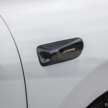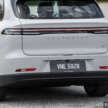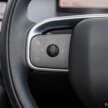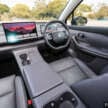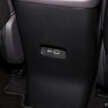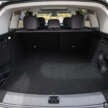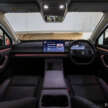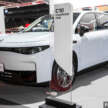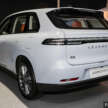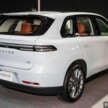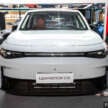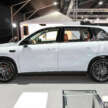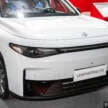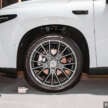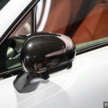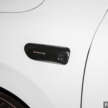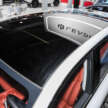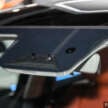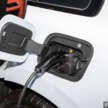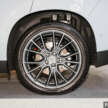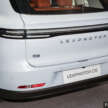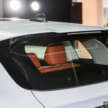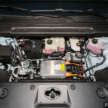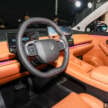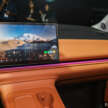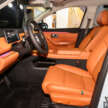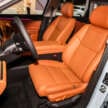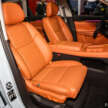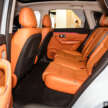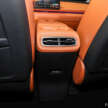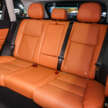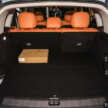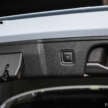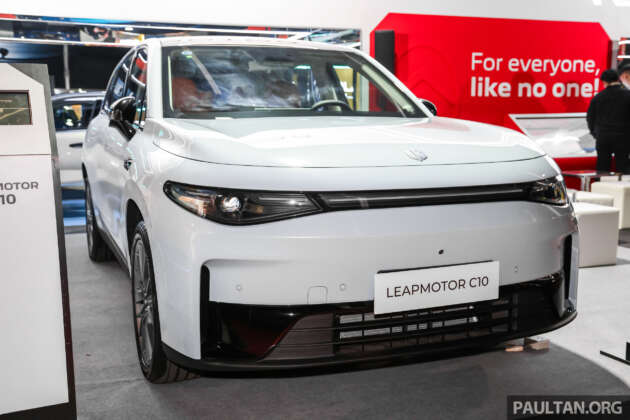
It’s getting to be a very competitive space, the mid-price SUV market, what with a slew of Chinese offerings having cropped up in both conventional and new energy forms, and more set to appear on the horizon. Indeed, one more is due to arrive very soon, looking to secure traction while the space in electrification remains fairly open.
That brand is Leapmotor, and its arrival on these shores is part of what constitutes a global push (well, European, primarily) to establish itself as a key player in the game while there is opportunity for unknowns to do so. Here, as it is in regional markets such as Australia, the first pitch by the Chinese all-electric brand will be with the C10 SUV.
It isn’t making the journey by itself, but with the assistance of an entity that is also looking to quickly fill such gaps in its portfolio. Hitherto unknown to just about everyone outside China prior to last year, the deal that Ling Pao, as the brand is known in Chinese, has since secured with Stellantis means that it can now make its way into foreign markets in much easier fashion.
Granted, full awareness and acceptance will surely take time, but the arching reach of the auto conglomerate offers the brand – which was established in 2015 by Jiangming Zhu – a jump start in what would be otherwise a harder, if not impossible, pitch against more established players, complete with the reassurance of sales and service being handled by Stellantis.

Of course, the products have to stand on their own legs, and given what has been seen of it so far through the full preview held for it here last month, there’s quite a bit to shout about it in the way of size, space and features. But how does it fare in use, and on the road? Having sampled the SUV at its international drive event in Italy recently, here are the initial observations of how it stacks up.
Big, it is
Measuring in at 4,739 mm long, 1,900 mm wide, 1,680 mm tall, with a wheelbase of 2,825 mm, the C10 is not diminutive. Indeed, from a size perspective, it’s a D-segment offering that is larger than most of its price-point rivals in many markets. Here, it will go up against the likes of the Proton X90 and Chery Tiggo 8 Pro when it arrives on the scene, although it seats five compared to the duo. In the EV space, it will compete against models such as the BYD Atto 3 and Proton eMas 7, and it is larger than both.
Styling-wise, the general shape is clean, but rather nondescript, with the presented lines traditional rather than cutting-edge. Anoraks will note some smart-related cues in that front end, and the sculpting of the car’s side plays it – German-nesque – safe. At the back, design points such as the horizontal light bar, slim rear light assemblies and unfettered rear shape keeps to the theme favoured in the domestic market.
In its presentation at the event, the brand made it clear that it was keeping to offering the C10 in the most simple fashion, with just two trims – and five colours (Canopy Grey, Pearly White, Tundra Grey, Metallic Black and Glazed Green, the hero shade) – for the SUV.
Markets such as Europe and Australia will get both forms (Style and Design), but we understand that Malaysia will get just one, and that’s the higher-spec Design, easily discernible from the 20-inch alloys it wears (the Style runs on 18-inch units). With these particular wheels, you’ll find 245/45 profile Dunlop e.Sport Maxx rubbers as standard fitment.
The driving force underneath
Also in line with keeping it simple is the single choice of electric motor and battery for it. Away from its home market, the C10 is available only in single-motor rear-wheel drive guise, with 218 PS (160 kW) and 320 Nm of twist on tap. This is good enough to move the 1,980 kg offering from standstill to 100 km/h in 7.5 seconds, all the way to a rated top speed of 170 km/h.
A lithium iron phosphate (LFP) battery provides the necessary juice, and while two capacities are available in China (52.9 kWh and 69.9 kWh), the C10 for all global markets, including Malaysia, will only feature the 69.9 kWh unit, which offers the C10 up to 420 km of WLTP-rated travel on a single charge.
Speaking of charging, the C10 offered in Europe is equipped with a 6.6 kW AC charger and can accept a maximum of 84 kW of DC fast charging, which can bring the LFP pack from a 30 to 80% SoC in about 30 minutes (for AC, 6.1 hours to achieve the same SoC).
The rather slow DC charge speed can be put down to the 400V architecture the C10 employs. Asked as to why the global choice was that rather than the 800V route, the answer provided at the drive was that it would be largely beyond the ability of most charging networks available on the continent. That, and the idea of keeping the price of the vehicle low, of course.
Much was made of the fact that the C10 was developed using Cell-to Chassis (CTC) 2.0 technology, which integrates the battery cells into the structure of the vehicle, an approach the company says not only improves the battery layout and element of space, but also helps increase the torsional rigidity of the chassis to 42,500 Nm/degree. It also proudly stated that more than 60% of the total amount developed for the powertrain, intelligent driving and cockpit systems were all accomplished in-house, from the ground up.
Cleanly elegant
As already noted, the cabin presentation is clean, austere in its pitch of elements and lines. The minimalist interior is available in two colour trims, with the Oeko-Tex Standard 100 ‘silicone leather’ seat upholstery (which is said to be liquid resistant and “baby-friendly”) presented in a choice of Criollo Brown and Midnight Aurora, the latter a black and faint purple combination. Build quality looks tight, but time will tell as to how it will all stand up.
Display-wise, the C10 features a 10.25-inch instrument panel with 1920 x 720 of resolution and a 14.6-inch, high-definition central display with 2560 x 1440 of resolution. Both screens are said to be laminated to reduce glare and improve visual quality in daylight. In use, legibility is very decent, although there was no escaping reflection at certain angles when attempting to take photos.

Operation-wise, the Qualcomm Snapdragon chip-equipped OS – which the automaker says will constantly be updated through over-the-air updates – worked smoothly, offering zero lag in moving through the available interface menus and screen stacks. You’ll certainly need it to be, if you’re the type to fidget with AC temperatures and blower speeds, for example. The argument persists that while minimalism is undoubtedly tidy from a visual viewpoint, it comes at the expense of practicality and speed of adjustability.
The infotainment system features a 840 watt, 12-speaker surround sound audio system (fully-developed in-house, mind you) as well as satellite navigation, Wi-Fi and Bluetooth, but there’s no Apple CarPlay or Android Auto connectivity. It doesn’t look like there will be, with the answer provided by the company hinting that AACP is only set to appear in the brand’s products down the line.
Otherwise, the equipment list is strong, with standard fit items include dual-zone automatic climate control and a 42-inch fixed panoramic glass roof with electric sunshade as well as heated/ventilated front seats, wireless phone charging, four USB ports (one Type A, one type C each, front and rear), ambient interior lighting and an electric tailgate.
Also, the C10 utilises a NFC card key, the latter the only key type provided for the vehicle. As noted previously, the NFC card has to be placed on the centre console for the vehicle to be started.
Space, and then some
Given its size, you’d expect interior space to be very ample, and it is, especially cavernous at the back, with enough knee room to grow inches taller for. Someone noted that beyond a certain measure, the extra depth feels a little redundant, but better to have than to have not. For one, all that volume makes for a very adequate sleeping space, and a rather luxurious one at that.
As shown in our preview, it is possible to fold down both front seats (with headrest removed) to make for a comfy bench. If you need even more space, folding the rear seats completely down yields a 1.8 metre-long by 1.2 metre-wide bed space. Why anyone would have the need for it is surely a question worth asking, but the possibility for it is there. No naughty thoughts, ok?
A note about the front seats gleaned over the drive. It seats well and support is decent, providing for a comfortable experience over duration of the drive. As for cargo space, the C10 offers 435 litres of boot volume with the rear seats up, and folding down the 60:40 rear bench increases this capacity to 1,410 litres. A frunk offers an additional 32 litres of carrying space.
What else is there?
As for safety and driving assistance equipment, the C10 is equipped with seven airbags, rear parking sensors and a 360-degree camera. It also features a Level 2 ADAS suite with 12 high-precision sensors offering 17 related functions, including adaptive cruise control, intelligent speed assist, traffic jam assist, forward collision warning, AEB, lane departure warning, lane keeping assist and emergency lane keeping.
There’s also a driver monitoring camera and hands-off detection, which warns you should your focus on the road wavers. A note about Lidar – earlier, it was indicated that export versions won’t get that feature, as seen on China models, and this was confirmed during the drive. As for crash-test safety, Stellantis said it expects the C10 to receive a five-star Euro NCAP rating soon.
What’s it like to drive?
Given that just a week or so prior to the international drive, we had explored the right-hand drive iteration in some detail, and so revisiting the C10 in its left-hand drive form to gather driving notes felt, for want of a better word, weird. It did however make for faster acclimatisation to the SUV out on the road.
The short course, which ran a 120 km-long loop out from Malpensa in Milan, offered enough observations to be made. The first thing that was noted was the linear feel in how the C10 builds up pace, which feels more ICE in take-up than electric, specifically in how it offers progression. If you’re looking at barnstorming off the mark in an EV, this shouldn’t be your first pick for it, because it is more cruiser than bruiser.
Much of this could be how the SUV is pitched, which is as a “family choice” vehicle. As pointed out, the C10 is aimed at providing electric mobility to those looking for a family car, and the movement response from it feels tailored to fit that brief, even when you move the drive mode from what is a very static-feeling Eco into Comfort, which is where we left it for the most.
It’s not slow once you get past the initial crawl though, because the motor is pretty responsive to input from medium level speeds, and neatly, the car doesn’t feel big to maneouvre. Speaking of speed, the C10 feels most at home at intermediate speeds. Part of it is due to the ride, which has been recalibrated for the global market. Nuggety – but not jarring – at low speeds, the compliance moves up nicely in terms of behaviour when the pace picks up.
Supposedly, the global version of the C10 features a Maserati-tuned suspension, but this wasn’t stated outright. However, the mention of chassis tuning for it being carried out by Stellantis’ chassis tuning team at Balocco, Italy, where the trident’s proving ground happens to be, cements that suggestion. Plus points here, as the ride presentation on the C10 moves it well away from the overt softness and wallowy nature present in Chinese vehicles in their domestic market.
Handling is likewise decent, with decent body control to boot, provided you don’t push the two-tonne mass to do something it wasn’t intended for (family choice, remember). In any case, feedback to input in such a case is dull, as is the steering feel, and on the whole the car doesn’t provide any inclination to want to do anything else but get you to your destination in comfort, minus the abandon.
The brakes are grabby on initial bite, but the response when asked to haul up at speed can feel a little too damped and demands more effort. It’s not unique, the feel, prevalent on a number of offerings from other Chinese brands. Once you get the measure of it, gauging the pedal effort in relation to braking smoothness is easily accomplished.
A note about the C10’s turn of speed. Drive time was tight, and to ensure we made it back on time after lingering on too long at the designated stops, it proved necessary to gun the vehicle on its return via the Autostrada A8 well beyond the defined speed limit. Does the C10 reach its indicated top speed? The answer is yes (and more actually), although its composure becomes less poised operating at the upper limits of its performance threshold.
As for consumption, we weren’t really looking intently at that, but things kept fairly close to the 19.8 kWh per 100 km claimed figure by and large, ambling along. The last sector of close to 60 km yielded a 22.6 kWh/100 km reading, which if you factor the fairly long Autostrada push, is more than acceptable.
Chiming in
Some other observations. Much of the movement across the route on the way out was on B-roads, and crowded ones at that, which exposed one element that can and should be addressed. At speeds of up to 30 km/h, the vehicle’s audible safety element for pedestrians is just that, audible, and not only from the outside, with the drone prominently pitching itself into the cabin.
In a heavy traffic jam, the note won’t get to you, simply because the rapid start-stops would preclude continuity, but amble along in traffic that only goes up to the 30 mark before coming back down to 10 over and over again, as was the case in Milan, and you’ll find it can get pretty tiring after a while.
Another item that can be easily addressed is the intrusive nature of the ADAS warnings, especially that of speed limit and lane keeping assist, which have enough in the way of chimes and beeps that you stop paying attention after a while.
Yes, you can switch these off, but the sounds never quite disappear completely, and things default back to on when you get back in for the next journey, so you’ll have to end up doing the whole selection process again. Some bits are not foolproof – for example, after one scheduled stop, we’d just moved off again when my co-driver briefly tilted his head to look at something and the system beeped to announce possible driver fatigue.
It’s not unique, most of the ADAS warnings and audible interjections, because other Chinese EVs exhibit much the same behaviour. Granted, safety is paramount, but there should be at least the ability to leave them disabled should the user decide to. Nothing an OTA update can’t address, of course, and you can expect things to get better.

Sized for value, built for purpose
Until now, Stellantis Malaysia has yet to reveal a price point for the C10, but that will be answered soon when the SUV makes its Malaysian market debut. It has previously been hinted that the electric offering will be in the price ballpark “of the most popular EVs currently in Malaysia,” which could well put it up against the likes of the BYD Atto 3 (RM149,800) price-wise.
It’s not the most colourful in character, almost mobile-phone like, even, but it behaves exactly as a good family SUV should from a performance point of view, getting the job done quietly and cleanly each time. The only niggles are the lack of AACP and the audible drone of the pedestrian safety system, but the latter can surely be addressed to be less invasive.
Priced right, the Leapmotor C10 could be a very viable alternative for those looking at an all-electric SUV that is big on space, luxe and physical presence. Will it take the fight to others in the still nascent segment? We’ll find out soon enough.
GALLERY: 2024 Leapmotor C10 Malaysian preview, RHD



























































































































































